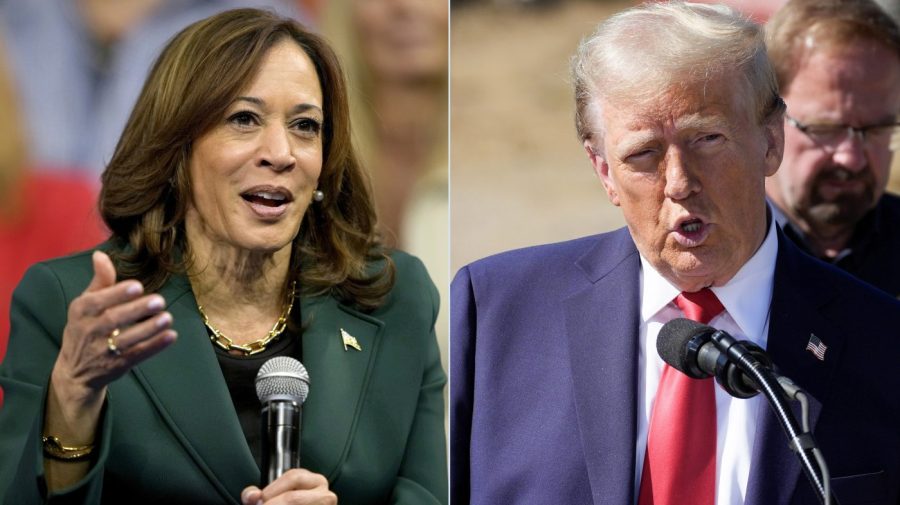
Vice President Harris and former President Trump have both vowed to protect Social Security, but experts say both of their campaign platforms fall short of specific solutions for a program that faces threats to funding in roughly a decade.
Recent estimates show not only that neither candidate’s agenda would stave off the threat of insolvency — but one’s proposals could worsen its budget outlook, absent ideas to tax or spending reforms to extend the lifetime of the program.
Here’s some of what the candidates have said so far.
Trump’s Social Security plans
Trump drew attention during the summer after he proposed doing away with taxation of Social Security benefits — one of a list of proposals aimed at providing tax relief to some Americans.
However, experts have raised concerns about the costs of scrapping income taxes on Social Security checks and how it would impact the program’s finances.
“His proposal would have a significant financial impact on Social Security because now those income taxes that some beneficiaries pay account for about 4 percent of Social Security’s revenues,” Richard Johnson, senior fellow for the Income and Benefits Policy Center at the Urban Institute, said.
The combined trust funds for Social Security retirement and disability benefits are currently projected by the program’s trustees to run out in 2035, a year later than previously expected, after economic growth exceeded expectations last year.
But under Trump’s proposed agenda thus far, a recent analysis from the Committee for a Responsible Federal Budget (CRFB) estimated the program’s funds could run out by 2031 while increasing Social Security’s cash deficit $2.3 trillion between fiscal 2026 and fiscal 2035.
A chunk of the cost comes from what the group identified as a roughly $950 billion price tag to eliminate income taxation of Social Security benefits.
Trump’s campaign has come out strongly against the analysis, with its national press secretary, Karoline Leavitt, accusing the “so-called experts” of being “consistently wrong throughout the years.”
“President Trump delivered on his promise to protect Social Security and Medicare in his first term, and President Trump will continue to strongly protect Social Security and Medicare in his second term,” Leavitt also said.
Leavitt said that a second Trump administration would shore up Social Security funding by “unleashing a new economic boom.”
Still, Trump’s agenda leaves experts guessing as to what changes the candidate could support to shore up solvency for the program.
In the official 2024 GOP policy platform highlighted on Trump’s campaign site, the plan calls for “no cuts” to Social Security and Medicare, as well as “no changes to the retirement age.”
Harris on Social Security
Harris’ online campaign page has vowed the candidate will protect Social Security and “strengthen” the program by “making millionaires and billionaires pay their fair share in taxes.”
As part of the rollout for the proposed fiscal year 2025 federal budget earlier this year, the Biden-Harris administration additionally outlined a pitch to extend solvency for the program by focusing on higher earners, noting that “middle-class and lower-income Americans pay Social Security taxes on all of their earnings, but higher-income Americans do not.”
At the time, the White House said the president also opposed benefit cuts and proposals to privatize Social Security.
But experts and budget hawks say the vice president’s agenda is still missing key details around her plans to shore up the program’s finances.
In a statement on Tuesday, Michael Peterson, CEO of the Peter G. Peterson Foundation, said “neither presidential candidate has addressed this challenge, and every year we fail to take action it only becomes more difficult to fix.”
“Overwhelming majorities of voters want candidates to prioritize solutions to strengthen Social Security, and the good news is that there are many available options to do just that,” he said, while also noting the program is “less than a decade away from automatic, across-the-board cuts, putting many millions of current retirees at financial risk.”
In the latest analysis by CRFB, the group said Harris’ proposals thus far “would not have large effects on Social Security trust fund solvency.”
But polling has shown the program’s solvency is still one of importance for voters, with a recent poll out of the Peterson Foundation showing a vast majority of voters, or 96 percent, say it’s important for “candidates to have a plan to prevent automatic cuts to Social Security.”
In their latest report over the summer, trustees projected the depletion date for the Old-Age and Survivors Insurance (OASI) Trust Fund, which pays out Social Security benefits to retirees, and the program’s smaller Disability Insurance (DI) Trust Fund will be in 2035.
Once the reserves of the OASI trust fund are depleted, the report projected that account income will only be able to cover roughly 80 percent of scheduled benefits for recipients.
Experts say either lawmakers will likely need to agree to reductions on the benefits side, raising taxes, or both, to prevent automatic cuts to benefits for seniors if funds run out.
“The Social Security date has not changed much in probably the past decade, and yet, what we have seen is, with each presidential election, we’re getting closer and closer to that day of reckoning, and so, we should become more and more urgent,” Johnson said. “So, it’s a little bit surprising that we haven’t seen more specific proposals.”
“On the other hand, these proposals would involve some pain, either more taxes or lower benefits, and pain doesn’t always win you votes,” he added.
The Hill has reached out to Harris’ campaign for further comment.

